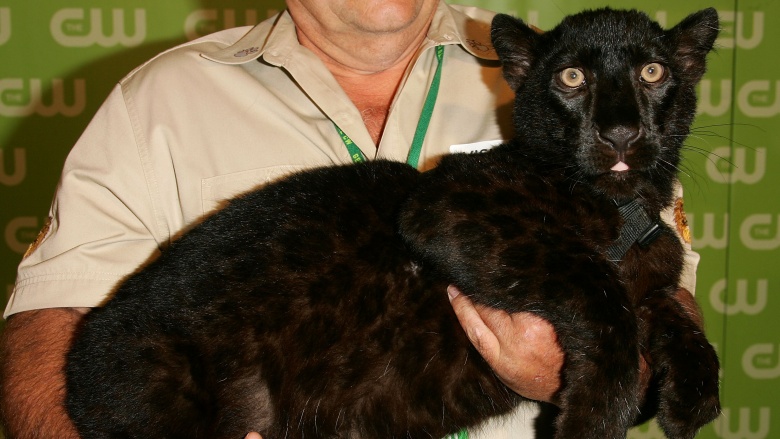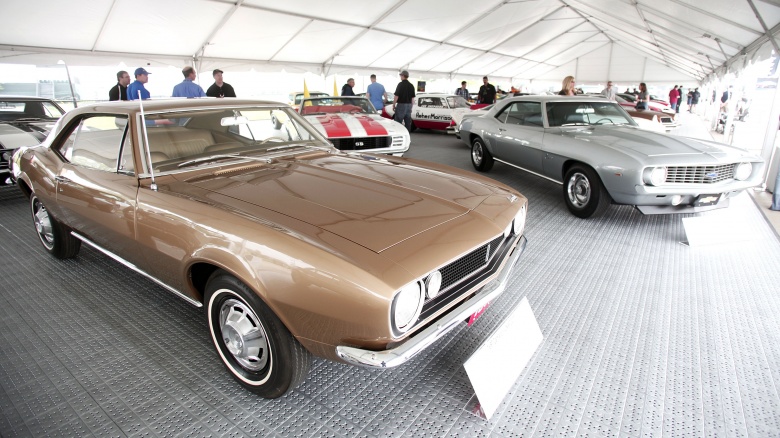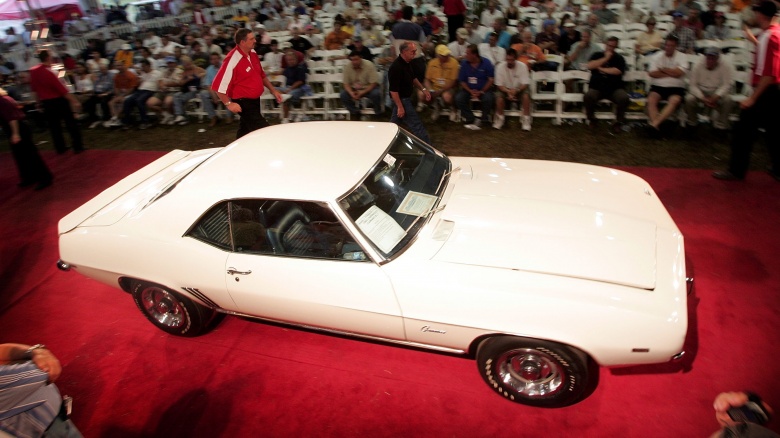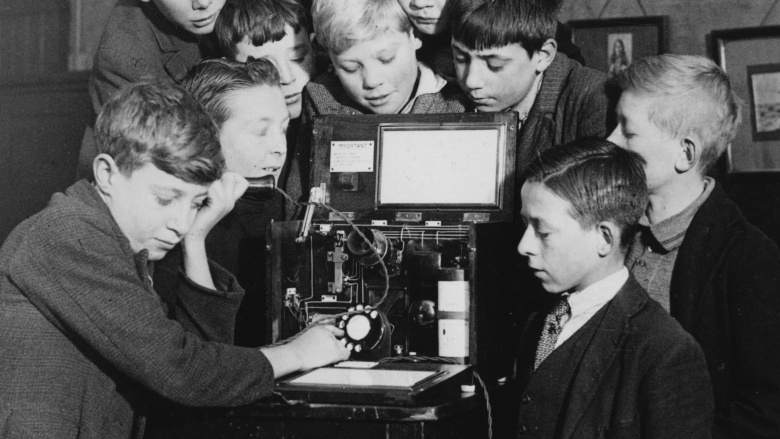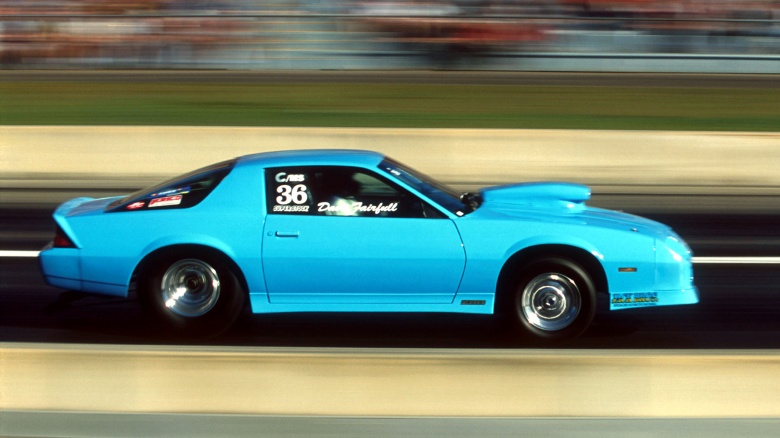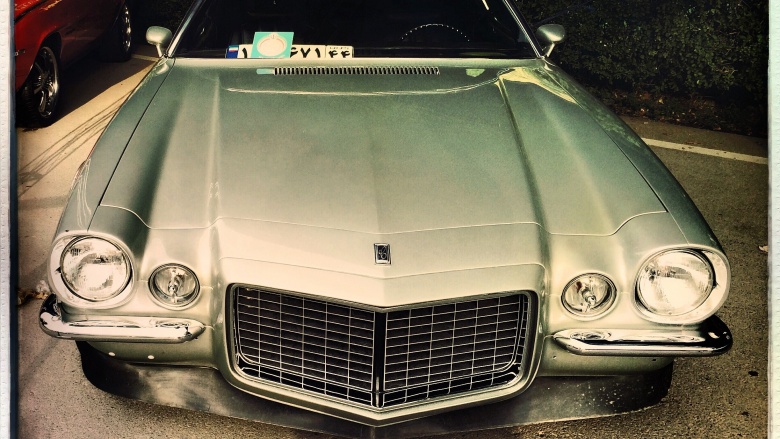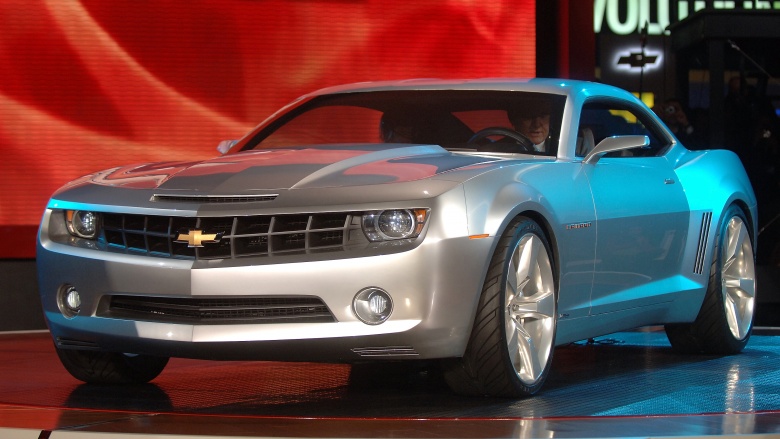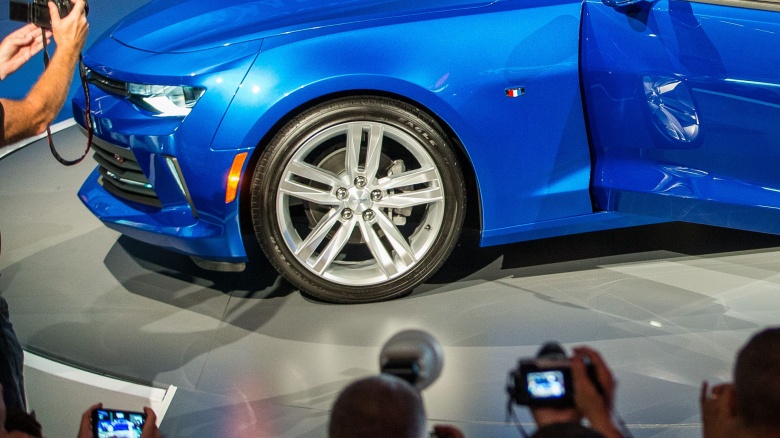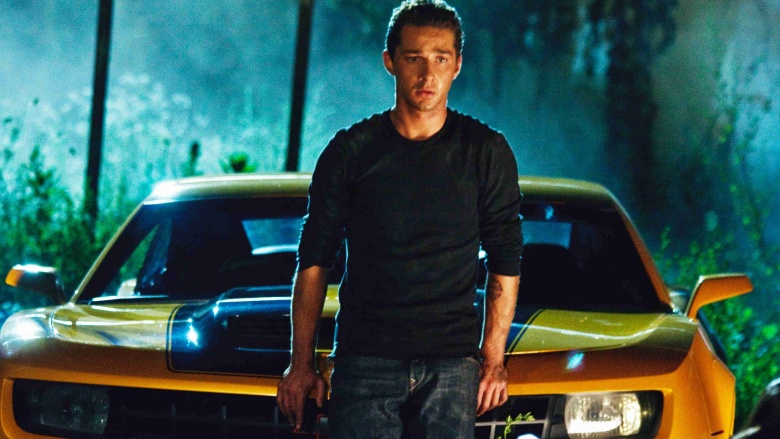What You Never Knew About The Chevrolet Camaro
The Ford Mustang was first let loose in April 1964, and it didn't take rival carmaker Chevrolet long to start work on the competition. However it was a full two years before Chevy's Camaro hit the road to take the fight to Ford. With its release in 1966, the Camaro turned out to be more than just a Mustang-alternative...
Cat got your tongue
Naming a new car can be difficult. It does have the potential to make or break a concept after all, so it's not unusual for a manufacturer to go through a few options before settling. Since the Camaro was being developed to challenge the Mustang, it's not really surprising that Chevy considered calling its new car the "Panther." While the name was kept around as a code name for the project during development, it was changed to "Camaro" before the cat was let out of the bag.
What's in a name?
If you are inclined to believe the rumors rolling around the Internet, you might make the mistake of thinking that Camaro means "friend" in French, but you would be wrong. Camaro is actually a made up word that has phonetic similarities to friendly sounding words like "camaraderie," but shorter and with a bit of exotic flavor thrown in. The only real word it's vaguely close to is the word "camarón," which means shrimp in Spanish, so you know that wasn't the plan. Although the "Chevy Shrimp" does have a certain ring to it.
Circle the wagons
If a name can ruin a car's image, then so can an ill-advised body style, and that would have happened if certain designs had made it onto the showroom floor. Interestingly, Chevy was considering making a station wagon version of the Camaro right up until the launch, and the idea almost returned for the second generation. Thankfully that idea bit the dust permanently—otherwise it might have led to all sorts of bizarre and inappropriate vehicular mashups, like the Corvette Camper, the Mustang Minivan, or the 2016 Durango Fastback.
Bizarre PR and a world first
Although the name "Panther" never made it onto the actual car, it did make it into the press release when the car was launched. Chevy used a bizarre PR campaign to promote the launch by inviting journalists to the first and last ever meeting of SEPAW, or "the Society for the Eradication of Panthers from the Automotive World." Over 200 journalists were invited, but they didn't all have to get to Detroit. That's because, for the 1966 launch of the Camaro, Chevy made history by holding the first live teleconference between 14 US cities. But although everyone could hear the speeches just fine, there was obviously no visual feed, which meant when the time came to dramatically reveal the name of the new car, the theatrics had to be narrated.
Pony up
When the Chevrolet Camaro was finally released in 1966, it helped to create a new class of American automobile in the process: the "pony car." Pony cars can broadly be described as sporty vehicles with aggressive styling and usually with the ability to carry more than two people. Although they're often perceived as upmarket, the base model prices and specs are usually kept relatively modest, but with plenty of upgrades and extras available to tempt the better off to part with a bit more cash.
Some Italian inspiration
In 1970, the time had come for an update, so it was decided to refresh the design and release the second generation Camaro. Because the sales war with Ford was still roaring, it was important to make a splash with the new version. Therefore the designers looked to another equine automobile for inspiration: in this case the Ferrari Lusso 250 GT, and the result was striking. Under the skin, however, the car was pretty much the same as it had always been, with the exception of a little extra size and weight. It also was no longer available as a convertible. But then if you're feeling self conscious about your weight, you wouldn't want to take your shirt off in public either.
In pursuit of style
It stands to reason that if the police are going to catch fast cars in a chase, then they need a fast car to do the chasing. And while back in the 1960s you might have seen a pony car in black and white, these days it's most likely going to be a Ford Crown Victoria—unless you're in Dubai. Because there's a lot of money sloshing around in Dubai, there are a lot of fast cars. And if the police are going to have any chance of enforcing the speed limits, they need a few fast cars too. That's why alongside the odd Bugatti Veyron and Mercedes SLS, the Dubai police also have a fifth-generation Chevrolet Camaro Z28. Getting caught never looked so good.
Slimming down
There are two ways to increase performance in a vehicle: add power or reduce weight. And in the ongoing battle to improve the Camaro and challenge the Mustang, Chevy engineers are looking everywhere to save weight, and that includes out the window. The designers of the fifth-generation Camaro managed to save nearly a pound of weight by making the glass in the rear window thinner by 0.3 millimeters. They also removed padding from the rear seats and sound insulation from everywhere (adding awesome noise in the process, obviously) in their efforts to trim it down. But if you think that's remarkable, when it came to the recently released sixth-generation Camaro, the engineers managed to save an astonishing 200 pounds compared to the generation five car. If you have a gen-5 Camaro and you're desperate to boost the performance, a similar effect can be achieved by giving your passenger the spare tire and leaving them both on the side of the road.
Automatic updates
In a neat bit of product placement, the Chevrolet Camaro played the part of the heroic Autobot Bumblebee in the 2007 live action Transformers movie. At the beginning of the film, Bumblebee is in the form of a past-its-best 1977 second-generation Camaro. However as the movie progresses, he happens to see a passing fifth-generation concept car and subsequently updates himself to look like the newer model—which is impressive since the fifth-generation wasn't released until 2010. Hopefully that trick will come as standard in future generations of the Chevy Camaro. Meanwhile, Volkswagen must've been pissed; Bumblebee used to be modeled after the Beetle, hence the insect-themed name.

